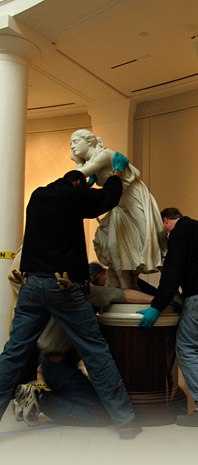Home // UM Museums // Museums List
Museums List
Select a museum below to view more information:
Exhibit Museum of Natural History
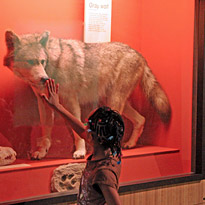
The Exhibit Museum of Natural History promotes understanding and inspires appreciation of the natural world and our place in it. It was formally established as a separate museum in 1956, although its mission to provide exhibits and educational programs in natural history and anthropology for the public and campus communities has been pursued since the late 19th century. Originally serving as a window onto the University's natural science research and collecting museums (Paleontology, Zoology, Anthropology, and the Herbarium), the Exhibit Museum's scope has broadened to include astronomy, geology, and other current scientific research.
In November 2007, the Museum's 50 year old Planetarium was updated with a new state-of-the-art Uniview® video projection system, which offers full-color, full-dome, 3-D special effects. Advanced technology enables viewers to "fly" through space, explore planets, and journey to the very edge of the visible universe. Last year, the Museum welcomed more than 85,000 visitors, including 21,000 school children and thousands of University students. The Museum's educational programs include a course on Museum Methods, guided tours, lectures, workshops, Science Cafes, public events and summer camp.
Kelsey Museum of Archaeology
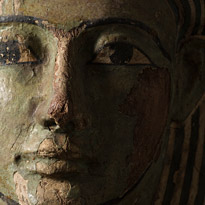
The Kelsey Museum of Archaeology's rich history began with the acquisition of approximately 100 objects in the late 1800s. The museum now houses over 100,000 artifacts and works of art from ancient Egypt, Rome, Greece, and the Near East - ranging from prehistoric through medieval times - and nearly 25,000 photographs from the early 1900s. Sixty-five percent of the collection derives from important excavations in the Mediterranean conducted during the 1920s and 1930s. Among its holdings are the largest collection of Graeco-Roman Egyptian artifacts outside of Cairo, one of the largest corpus of Latin inscriptions in North America, and an impressive collection of Egyptian mummy masks.
The principal mandate of the Kelsey Museum of Archaeology is the care, interpretation, and presentation of its remarkable holdings. All of the collections are widely used by University of Michigan classes as well as by scholars throughout the world. The mandates of teaching and research are complimented by a lively educational outreach program to the public, and temporary and permanent exhibitions.
Herbarium

The Herbarium is a world-class research museum dedicated to the study of plant and fungal diversity in Michigan, the Great Lakes, and globally. The Museum's research focus is on plant systematic, geography, and evolutionary biology. Researchers study some of the largest genera of flowering plants in the world, with consequent issues of conserving rare plants, assessing biodiversity, and conveying that information to the interested public in a timely manner. Ultimately we strive to contribute knowledge and expertise about the growing loss of biodiversity worldwide on both the local and global level. The Herbarium's collection now comprises nearly 1,700,000 specimens.
Museum of Anthropology
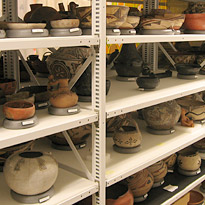
The Museum of Anthropology is a research and collection museum located in the Ruthven Museum Building and focused on the study of humanity's past. Our curators, affiliated researchers, and doctoral students conduct archaeological and biological anthropological research across the globe, exploring our species' biological and cultural evolution - from the emergence of human culture in the Paleolithic to the rise and expansion of states and empires in both the New and Old World. The Museum's collections of more than three million archaeological and ethnographic artifacts, comparative specimens, and associated documentation are derived from more than a century of scientific research conducted across the globe; together they provide an irreplaceable resource for education and scholarship on human diversity and long-term culture change. Archaeological collections are organized geographically into the Great Lakes, North American, Asian, Latin American, Middle Eastern, African, and European archaeology divisions. In our zooarchaeology and paleoethnobotany laboratories, our curators oversee research on animal and plant domestication, ancient subsistence practices, and human-environment relations over the millennia.
The Museum's mission integrates leading-edge research and teaching with collection care and curation. As scholars, we conduct archaeological research throughout the world; as teachers, we communicate the knowledge and skills of anthropological archaeology to undergraduate and graduate students in field, laboratory, collection, and classroom contexts; as curators, we work to expand knowledge, disseminate information on, and responsibly care for the Museum's collections.
Museum of Paleontology
www.paleontology.lsa.umich.edu
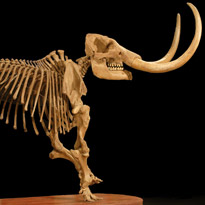
The Museum of Paleontology, located in the Ruthven Museum Building, is a research and teaching museum focusing on the meaning of life through geological time. Paleontology at the University of Michigan has a long and distinguished tradition dating from 1837 when a "Cabinet of Natural History" was authorized at the first meeting of the Board of Regents. The first fossils acquired for the cabinet were collected on Isle Royale by Douglass Houghton, the first state geologist of Michigan and one of the first appointees to the faculty of the University. The Cabinet of Natural History was reorganized as a Museum in 1882 and the Museum of Paleontology, as presently organized, came into being in 1926.
The Museum of Paleontology provides the facilities enabling direct hands-on study of plants and animals preserved as fossils, and study of the environmental, ecological, and paleogeographical conditions in which they lived. Paleontological resources at Michigan, in the form of collections, specialized libraries, and equipment for teaching and research, reflect the interests and expertise of professors and graduate students working here. Because of the Museum and what it facilitates in terms of hands-on experience, our teaching and research programs have long been known for their empirical focus, with an emphasis on testing new ideas as well as generating them.
Museum of Zoology
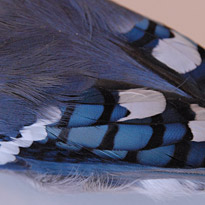
The Museum of Zoology serves as the nucleus for the study of animal diversity at the University of Michigan, focus on the evolutionary origins of the planet's animal species, the genetic information they contain, and the ecosystems they form. It houses some of the finest zoological research collections in the world, including comprehensive representation from all primary global ecosystems. Such collections provide the best tangible record we have of life on Earth and constitute a crucial resource for use in research, conservation and education. The Museum of Zoology includes six divisions, each with two curators: mammals, birds, amphibians and reptiles, fishes, insects and other arthropods, and mollusks. World-wide these groups include several million species. The divisional collections include some 15 million specimens: 4-6 million insects, 5.5 million mollusks, 3.5 million fishes, 355,988 amphibians and reptiles, 200,000 birds, and 130,000 mammals. All of the divisional collections are ranked among the most extensive and important in the world. The Museum also operates multi-user laboratories in cytogenetics and molecular systematics.
University of Michigan Museum of Art
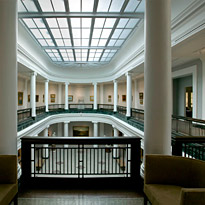
On March 28, 2009, the University of Michigan Museum of Art opened a landmark $41.9 million expansion and major restoration of its Beaux-Arts historic home, Alumni Memorial Hall. The transformation fulfills the Museum's mission to bridge visual art and contemporary culture, scholarship and accessibility, tradition and innovation. This new meeting place for the arts provides expanded spaces for display, performance, art making, learning, teaching, and viewing for both campus and community audiences. UMMA reopened with newly installed collections galleries featuring works drawn from the Museum's collections of more than 18,000 works of art.
Matthaei Botanical Gardens and Nichols Arboretum
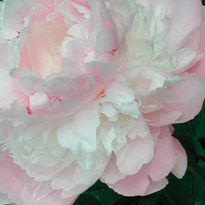
The mission of the Matthaei Botanical Gardens and Nichols Arboretum at the University of Michigan is to promote environmental enjoyment, stewardship and sustainability through education, research, and interaction with the natural world. In 1907, The University created a Botanical Garden and Arboretum on the land between Geddes Road and the Huron River, just a few blocks from Central Campus on the site now known as Nichols Arboretum. At the time, the property consisted of approximately 80 acres. Today, more than 100 years later, The University of Michigan Matthaei Botanical Gardens and Nichols Arboretum manages over 700 acres of garden, research areas, and natural preserves around the Ann Arbor area with a complex of conservatory, greenhouses, laboratory, teaching and meeting spaces at Matthaei Botanical Gardens and the James D. Reader, Jr. Center for Urban Environmental Education at Nichols Arboretum.
Sindecuse Museum of Dentistry
http://www.dent.umich.edu/about-school/sindecuse-museum/sindecuse-museum-dentistry
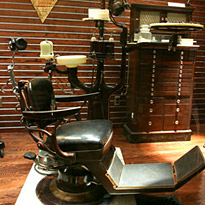
The Sindecuse Museum of Dentistry was created in 1991 with a gift from Gordon H. Sindecuse, DDS, a 1921 graduate of the University of Michigan School of Dentistry. Housed within the School of Dentistry, it is one of only a handful of museums throughout the world devoted to preserving the history of the dental profession. The Museum develops and preserves a historical collection containing over 10,000 objects focused on the history of dentistry with particular interest on dental practice and technology in the United States and Michigan dating from the 18th century to today. We are dedicated to education our audiences through museum exhibition, related programs, research, and preservation of its collections. Inherent in the Museum's mission is a dedication to stimulate and understanding and appreciation of dentistry in a historical context for museum visitors, including the University of Michigan School of Dentistry community, campus community, alumni, and the public.
The Detroit Observatory
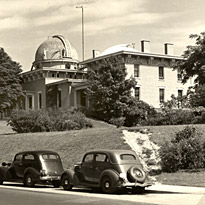
In 2005, the Detroit Observatory became a division of the Bentley Historical Library. The Detroit Observatory, named in honor of major donors from Detroit, was the centerpiece of President Henry Philip Tappan's efforts to transform the University of Michigan into one of the first research universities in the United States. Today, the building stands essentially as it was in 1854. The original astronomical instruments remain intact and operational, including the 6-inch Pistor & Martins meridian circle and the 12 5/8-inch Henry Fitz, Jr. refracting telescopes, which in their day were among the largest in the world. The dome is turned manually by pulling a continuous rope.
Completely restored in 1998, the Observatory is a cultural treasure waiting to be explored. The Observatory is open twice a month for tours.
Stearns Collection of Musical Instruments
www.music.umich.edu/research/stearns_collection
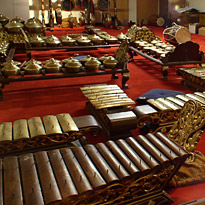
Holding over 2500 pieces of historical and contemporary musical instruments from all over the world, the Stearns Collection of Musical Instruments is one of the largest accumulations of such artifacts housed in a North American university. Known internationally as a unique collection, it is not only a precious heritage from the past, but also a rich resource for musical, educational, and cultural needs of the present and future.
The collection features permanent and occasional displays in the Vesta Mills Gallery and in various exhibition areas throughout the Earl V. Moore Building of the School of Music of the University of Michigan.
The Virtual Museum
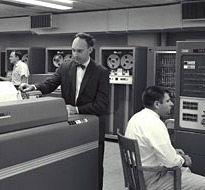
The Virtual Museum Project is working to creating a "museum" that collects and exhibits the histories of information technology at the University of Michigan. The Museum exists to inspire students, faculty, staff and IT professionals to continue developing empowering technologies, despite the risks and uncertainties of working at the threshold of knowledge.
The Virtual Museum will present stories from the history of information technology at Michigan in which the University has shown unique strength, and which demonstrate the impact of technological innovation within the IT community both nationally and internationally. Rather than providing a comprehensive survey of the history of IT, it will offer exhibits devoted to specific events and subject areas, organized into broad themes.
The Museum objectives are:
- To remind. Making tacit knowledge explicit
- To teach. Educate about the University's role in making IT History
- To commemorate. Preserve & memorialize memories.
